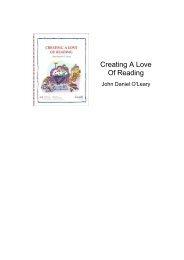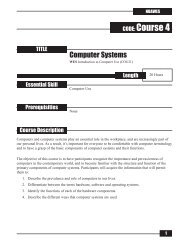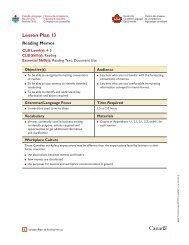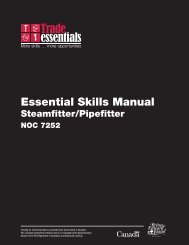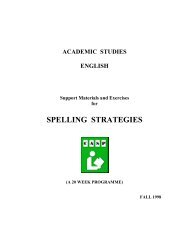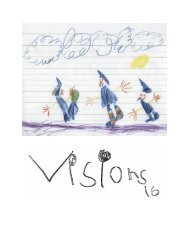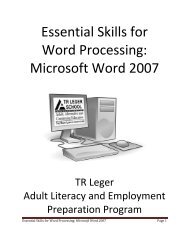Integrating Essential Skills into Training - National Adult Literacy ...
Integrating Essential Skills into Training - National Adult Literacy ...
Integrating Essential Skills into Training - National Adult Literacy ...
Create successful ePaper yourself
Turn your PDF publications into a flip-book with our unique Google optimized e-Paper software.
Overview of today’s presentation:<br />
An Introduction To • What are essential skills and the background<br />
<strong>Integrating</strong> <strong>Essential</strong><br />
• Why should we address ES skills in our training?<br />
• How do we integrate ES <strong>into</strong> our programs and courses?<br />
<strong>Skills</strong> Into <strong>Training</strong> by explicitly incorporating them in course objectives and learning<br />
outcomes<br />
Programs by understanding that each ES has a range of complexity<br />
by using authentic workplace tasks and materials in our training<br />
by introducing active learning strategies<br />
WWestnet by using a project-based approach<br />
by making problem solving the driver for all ES training<br />
<strong>Integrating</strong> <strong>Essential</strong> <strong>Skills</strong> Workshop by ensuring that the ES we teach are transferable<br />
(Yellowknife, May 24 )<br />
Active Learning<br />
Active learning - anything that is not sitting passively<br />
listening to a lecture Should we be training our learners to:<br />
Learners reflect on their learning<br />
Learners are active participants in their learning<br />
Learning takes place in relevant (authentic) contexts<br />
• carry out a wide variety of everyday occupational tasks<br />
including computer and document use tasks?<br />
Some examples: case studies, scenarios, group work<br />
• meet the numeracy demands of today’s jobs?<br />
(cooperative learning), role plays, facilitated discussions<br />
using how and why, simulations, presentations, self-<br />
• learn new skills?<br />
assessment activities, panel discussions, peer teaching,<br />
guided design, interactive lectures, drama, making<br />
things, hands-on activities, journaling or blogging, • adapt to changes in the workplace?<br />
making a learning website, dull information via an<br />
interesting task, interviews, research, etc. • seek answers, solve problems and think critically?<br />
Active learning log<br />
• use printed and written information to perform<br />
competently?<br />
• be organized, efficient and to pay attention to detail?<br />
• work well with others?<br />
• be effective oral communicators?<br />
• have the skills to make researched, responsible<br />
decisions<br />
• keep a job and “move up the ladder” if they so choose?<br />
• fulfill their individual and collective potential at work,<br />
at home, and in the community?<br />
If you consider these outcomes important,<br />
have you included some or all of them in<br />
your program objectives?<br />
Circle all ES objectives or tasks in your course outlines<br />
9 If you have them – you understand what essential skills<br />
are and you are on your way to integrating them.<br />
9 If you don’t have them – make essential skills part of your<br />
learning objectives.<br />
The integration of essential skills starts with program<br />
objectives and learner outcomes. Objectives and<br />
outcomes should respond to identified ES needs.




